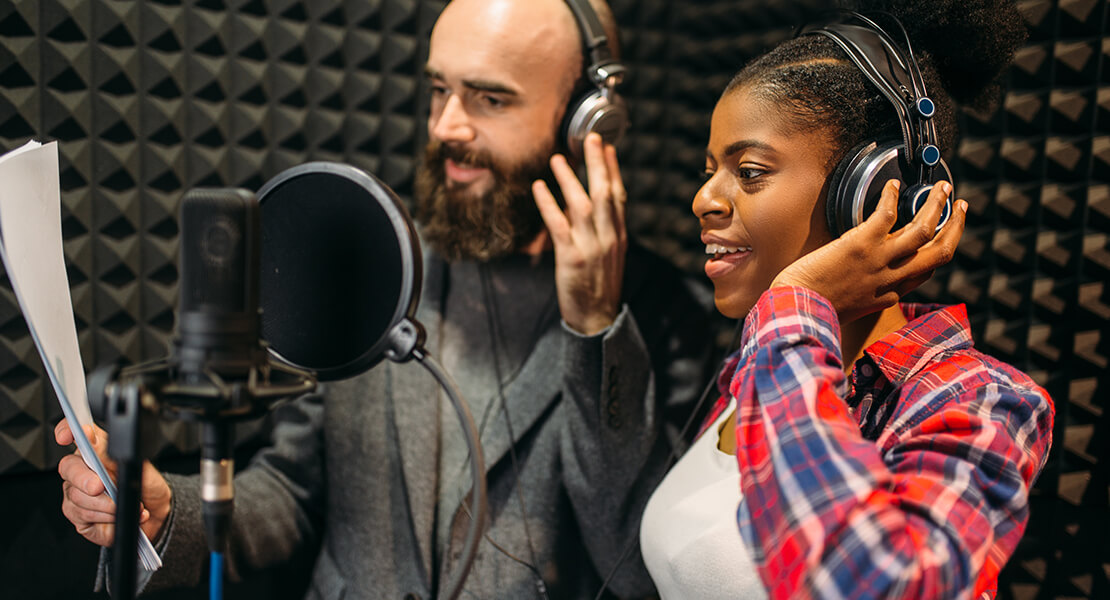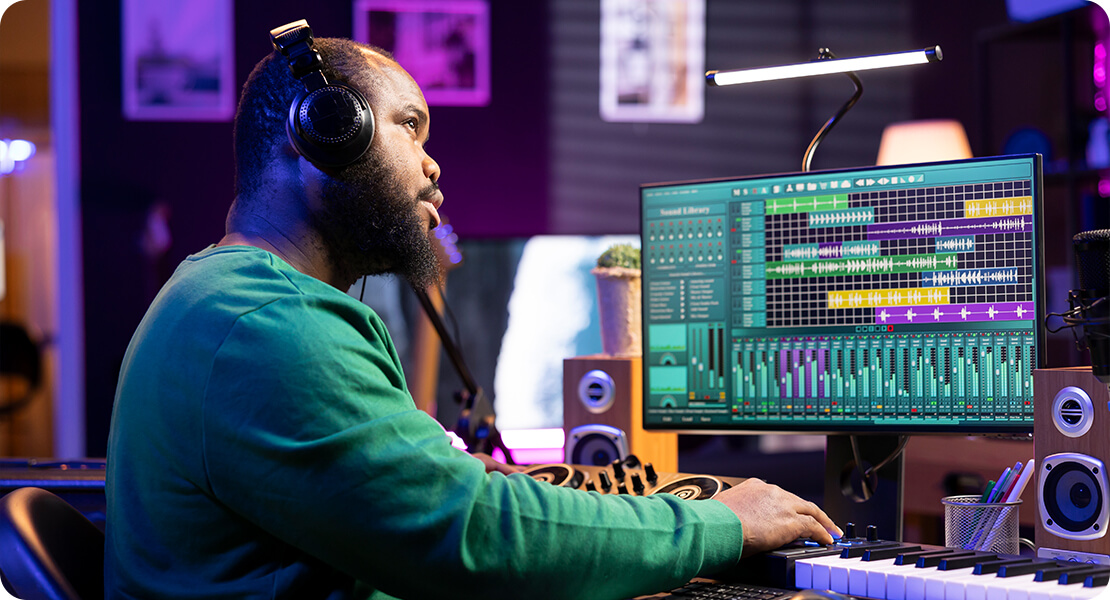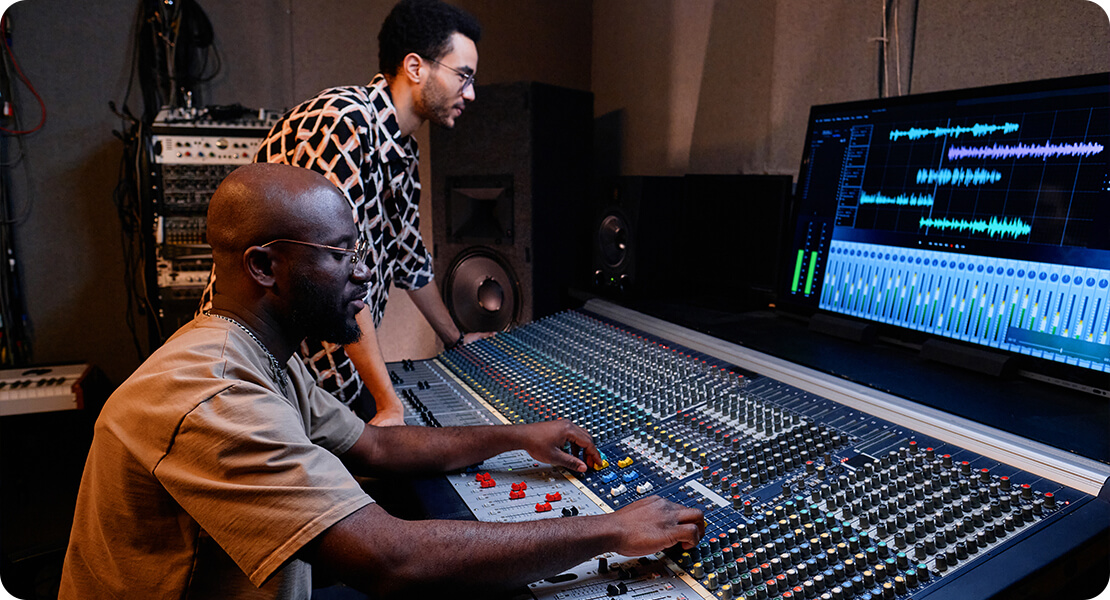
When most people think of animation, they picture vibrant visuals and quirky characters. But animation is far more than what meets the eye. Behind every frame lies a trio of powerful storytelling tools—voiceovers, music, and motion—that bring depth, tone, and emotion to animated content. These hidden layers are what turn a simple animation into an experience that sticks with you. Whether you’re producing a brand explainer or a short film, understanding how these elements interplay can dramatically increase your animation’s impact. Let’s lift the curtain and explore how voice, sound, and movement shape the magic of animation.
The Power of the Human Voice
Voiceovers aren’t just about narrating words—they’re about personality, pacing, and persuasion. A good voiceover can make an audience laugh, cry, or take action, depending on how it’s delivered. From authoritative tones in educational videos to cheeky charm in brand ads, the voice sets the emotional baseline. It’s not just what’s said, but how it’s said. Choosing the right voice actor matters as much as the script itself. In fact, mismatched narration can tank an otherwise well-crafted animation. Accents, pacing, and intonation all play into how a message is received. Get it right, and you’ve instantly built trust and engagement.
Why Music Isn’t Just Background Noise
Music is the emotional heartbeat of animation. It cues the viewer on how to feel, subtly guiding their emotional responses to what they see on screen. From dramatic swells to playful jingles, music adds emotional context where visuals alone may fall short. Imagine a climactic scene with no music—it would feel flat, unfinished. The best animations use music as an invisible character, present in every scene, shaping pace and tone. And it’s not always about going big—sometimes a minimalist score or silence is just as powerful. Done right, music enhances timing, adds polish, and binds the story together.
Motion That Speaks Louder Than Words
We often talk about body language in live action, but motion in animation works just the same way. The way a character moves—how fast they blink, how their shoulders slump, or the way they bounce when excited—conveys emotions beyond dialogue. These subtle gestures are what make characters relatable. Motion design also plays a huge role in non-character animation, especially in explainer videos and infographics. A smooth transition or a timed bounce can hold attention, clarify complex ideas, or simply entertain. In animation, motion is never random—it’s choreographed with precision to support the story.
Synchronisation: The Glue Holding Everything Together
One of the greatest challenges in animation is synchronising voice, music, and motion so they feel natural. If the timing’s off—if a character’s mouth doesn’t match the voice or a beat drops at the wrong moment—it breaks the illusion. That’s why timing is everything. Animators work frame by frame to ensure each element lands exactly where it should. Even a half-second delay in a reaction or a poorly timed joke can throw the audience off. When all three layers are in sync, the result is seamless and immersive, drawing the viewer in completely.
Creating Mood Through Sound Design

While music sets the emotional tone, sound effects (or Foley) bring the world to life. The rustling of leaves, footsteps on gravel, or the swish of fabric—all these subtle sounds add realism and immersion. In animation, where nothing is recorded live, every single sound must be created or sourced. That means sound designers have to imagine and construct entire audio environments from scratch. The right sound effect, used at the right time, can elevate a scene from good to goosebumps. It’s detail work, but it makes a world of difference.
Voice Casting: Why It’s a Critical Decision
Picking a voice actor isn’t just a technical task—it’s a creative decision that affects how your audience connects with the animation. Think of iconic animated characters: they’re often remembered as much for their voices as their looks. Whether you’re looking for warm and trustworthy or bold and energetic, casting the right voice requires knowing your audience and your message. It’s not uncommon to audition dozens of voices before landing the perfect one. Once you hear “the one,” everything else starts falling into place.
The Role of Silence and Pause
In animation, it’s tempting to fill every second with action and sound. But silence—when used intentionally—can be just as powerful. A well-placed pause allows emotions to land, jokes to breathe, and scenes to feel more realistic. In voiceovers, a pause can emphasise key points or give space for music to take the lead. In music, breaks in the rhythm can create anticipation or highlight a transition. And in motion, a freeze or slowed-down moment can build drama. These quiet moments are often what elevate an animation from functional to memorable.
Building Tempo Through Musical Pacing
Just like editing in film, music in animation helps set the tempo. Upbeat tracks can make scenes feel lively and fun, while slower scores build tension or sentimentality. Good musical pacing aligns with visual transitions—each beat should support a scene change, a motion shift, or a key moment. This synchronisation helps guide the audience’s attention and emotional journey. Choosing tracks with a clear rhythm also helps animators plan transitions and movements, turning the soundtrack into a blueprint for pacing and flow.
Making Motion Feel Natural
Natural motion is crucial, especially in character animation. Even the most fantastical characters need believable physics and consistent movement to feel real. Animation principles like squash and stretch, anticipation, and follow-through help simulate real-world motion, even in stylised worlds. These principles create flow, impact, and emotional resonance. For example, a character slumping slowly suggests sadness, while a springy bounce might convey enthusiasm. Good motion design mirrors real-life physics and emotion—blending art with psychology to deliver authenticity.
Localisation and the Role of Multilingual Voiceovers

In today’s global market, voiceovers often need to be localised into multiple languages. But this isn’t as simple as translation—it’s about cultural context, tone, and rhythm. A joke that works in English may fall flat in Spanish unless adapted carefully. Voiceover localisation involves rewriting scripts, re-casting voices, and sometimes re-timing the animation to match new pacing. This level of detail ensures the animation resonates just as strongly with international audiences, preserving emotion and intent across languages.
When to Let Music Take the Lead
In some cases, music tells the story better than any words. Think of animated shorts or intros with no dialogue—just melody and motion. These pieces rely entirely on rhythm and emotion to convey meaning. Letting music take the lead works particularly well for universal stories or emotional beats. It also allows for broader accessibility, as the content isn’t limited by language. Music-led animation can connect with anyone, anywhere, creating powerful moments without a single line spoken.
Sound & Motion in Branding Animation
For businesses, the combination of music, voice, and motion is crucial in branding. These elements together create what’s known as a “sonic identity.” Think of Intel’s audio logo or the Netflix “ta-dum”—these sounds are instantly recognisable. In animated brand videos, voice and motion communicate the personality of the business, while music sets the tone. A fun, bouncy animation with playful narration sends a very different message than a sleek, minimal video with ambient music. Get the mix right, and your brand becomes instantly memorable.
Collaborating Across Disciplines
One of the most rewarding aspects of working with voice, music, and motion is the collaboration it inspires. Animators, sound designers, composers, and voice actors all bring different perspectives and expertise. When these creative minds work in harmony, the result is richer storytelling. But it requires open communication and clear direction. A composer might suggest musical shifts that influence timing, while an animator might adapt a scene based on a voice actor’s delivery. Building time for this kind of creative feedback loop ensures that the final product is truly cohesive—not just visually, but emotionally and tonally as well.
The Emotional Weight of Character Themes
Just like in film, character-driven animations can benefit greatly from theme music. Assigning a musical motif or recurring sound cue to a character creates emotional familiarity. When you hear that melody, you instinctively know who it’s about and what they’re feeling. Think of it as musical branding for characters. This technique adds another storytelling layer and helps audiences form deeper connections. Over time, these cues become emotionally charged—uplifting, melancholic, heroic—helping drive the narrative forward with minimal need for words.
Reinforcing Visual Cues with Audio
In animation, every frame is crafted with intent—and sound can reinforce those visual cues. For instance, when a character raises an eyebrow, a subtle pluck of a string or soft sound effect can make the moment land. When a scene transitions with a wipe or zoom, audio stingers or swooshes amplify the movement. These small additions, though often unnoticed consciously, greatly enhance the experience. Sound supports the visuals by adding texture, reinforcing tone, and making transitions feel purposeful and engaging.

Voice Direction: Bringing the Script to Life
Writing a great script is one thing, but directing the voice performance is what breathes life into it. Voice direction ensures consistency with the animation’s tone, pacing, and character intentions. A flat or overly theatrical read can throw off the emotional rhythm, no matter how well the animation is crafted. Directors often coach voice actors through different emotional interpretations, tweaking delivery until it matches the scene perfectly. It’s an art in itself—balancing clarity, tone, and authenticity to create a performance that enhances rather than distracts.
Dynamic Sound for Interactive Experiences
As animation moves into interactive formats—think educational tools, games, or explainer platforms—sound design becomes even more important. Users might click, swipe, or make choices, and every action can be enhanced with responsive audio feedback. These interactive cues guide the user, reward exploration, and provide satisfying micro-moments that keep them engaged. In this context, voiceovers often shift from narration to instruction or encouragement, while music must adapt in real time. Designing layered sound for interactive animation requires a flexible, modular approach—but when executed well, it elevates user experience dramatically.
Motion Graphics in Corporate Communication
Motion graphics have become a cornerstone of modern corporate communication. From onboarding videos to quarterly reports, animated motion helps clarify data, maintain viewer attention, and reflect brand tone. Music and voiceovers in this space are typically subtle yet polished—professional, clear, and steady-paced. The challenge here is blending clarity with creativity. When motion, music, and voice are used harmoniously, even the driest topics become easier to digest and more enjoyable to watch. It’s proof that effective animation isn’t just for entertainment—it’s a business asset.
Layering Emotion Into B2C Marketing Animation
In consumer marketing, animation must hit both the head and the heart. That’s where layered sound and motion come into play. A playful jingle paired with confident narration can build trust, while a swelling soundtrack and smooth transitions can evoke excitement or warmth. These techniques help position your brand emotionally, not just visually. Consumers may forget what they saw, but they’ll remember how it made them feel—and that’s exactly what voice, music, and motion are designed to influence. When aligned with your brand values, this trio becomes your storytelling secret weapon.
Planning Your Soundtrack Early
One common pitfall in animation production is leaving the audio until the end. But ideally, music and voiceover considerations should be baked into the storyboard and script stages. Planning ahead allows animators to match movements to beats, pace dialogue to motion, and build tension or energy where needed. It also opens the door to more strategic use of silence, transitions, and emphasis. Treating audio as an afterthought risks misalignment—but treating it as a storytelling partner from day one leads to animation that truly sings, in every sense of the word.
The Rise of AI Voices and Sound Tools
As technology advances, artificial intelligence is making its mark on voiceovers and sound design. AI-generated voices are becoming more realistic, offering a quick and cost-effective solution for projects with tight deadlines or evolving scripts. Likewise, smart tools for sound syncing and music generation help streamline the post-production process. But while these tools are useful, they work best when paired with human creativity. AI can support your animation workflow, but the emotional nuance that defines great voice acting or custom scoring still comes from experienced professionals who understand storytelling.
Subtitles and Accessibility Sound Choices
In today’s inclusive media landscape, accessibility is more important than ever. Animations often feature subtitles or captions, but the way sound complements them can influence viewer comprehension. A clear voiceover becomes critical for audiences with visual impairments, while thoughtful music levels ensure it doesn’t overpower the message. It’s also important to use sound cues for visual moments—like a ding when a new message appears—to support neurodiverse viewers or those with cognitive differences. Accessible animation isn’t just ethical—it makes your content more usable and memorable for everyone.
Sound Branding Across a Series
If you’re producing a series of animated content—whether for marketing, training, or education—developing a consistent sonic identity is key. This might include a signature intro jingle, recurring voice talent, or a unified music palette. Just as your visuals follow a brand style guide, your sound should too. Over time, audiences begin to associate those audio cues with your content, reinforcing brand recognition and emotional continuity. It creates a familiar rhythm and feeling across episodes, strengthening trust and improving recall.
Sound and Motion in Social Media Animation
Social platforms have their own pace—and sound and motion must keep up. Animations on Instagram Reels, TikTok, or YouTube Shorts have just seconds to hook a viewer. In these cases, punchy music, strong voice intros, and energetic motion design are essential. Even silent autoplay requires captions or visuals that imply rhythm. The trend is leaning toward fast edits, bold visuals, and sound that’s optimised for mobile. Whether you’re aiming for fun, emotional, or informative, how you use voice, music, and motion can mean the difference between a scroll-past and a share.

How the Audience Subconsciously Responds
Perhaps the most fascinating part of voiceovers, music, and motion is how audiences respond to them subconsciously. Viewers rarely think, “That sound cue made me feel tense,” or “That pause added impact,”—but their emotional reactions are directly influenced by these choices. When done well, these layers blend into the background and let the story shine. It’s this invisible craftsmanship that separates average animations from unforgettable ones. By mastering these subtle elements, creators tap into the emotional core of their audience without ever needing to explain how or why it’s happening.
Final Thoughts: Crafting Cohesion Through Layered Detail
Voiceovers, music, and motion might be the unsung heroes of animation, but they’re the threads that hold everything together. Without them, even the most beautifully drawn visuals fall flat. When used thoughtfully, these elements amplify storytelling, create emotional engagement, and guide your viewer’s journey. Great animation isn’t just seen—it’s heard and felt.
So next time you’re crafting an animated video, don’t just focus on the visuals. Tune into the layers beneath. That’s where the real magic happens. And if you’d like to create great animations for your business, then feel free to get in touch with our animation company for a free consult.

